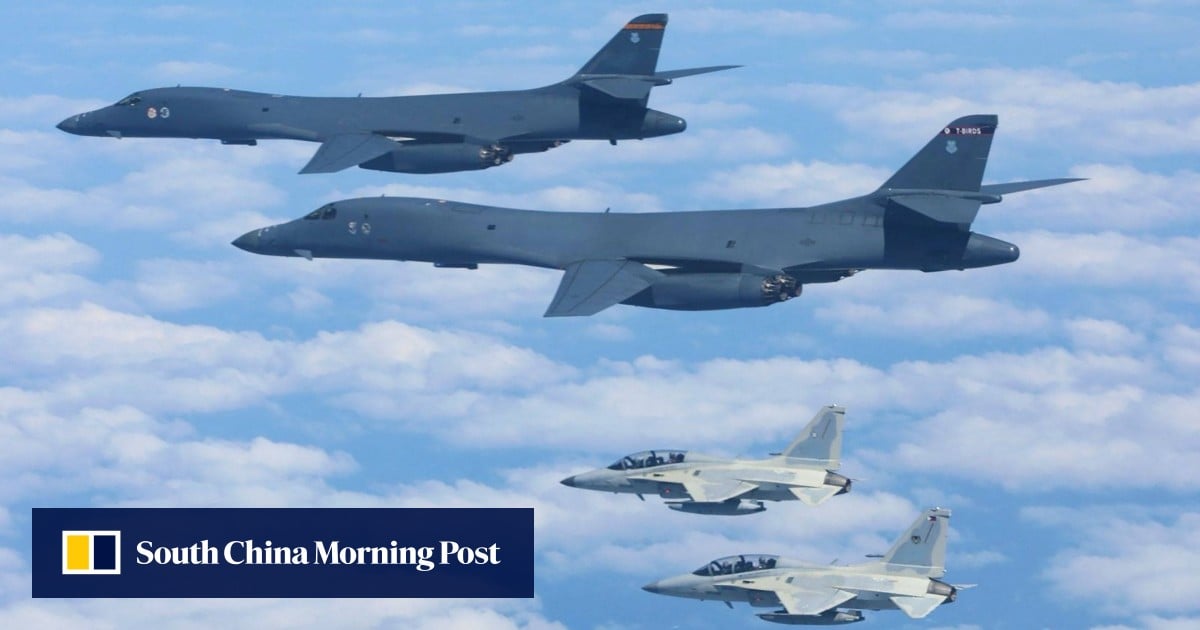
Philippines and US Aircraft Fly Near Contested Shoal Sending Message to China
The South China Sea has long been a hotbed of geopolitical tensions, with multiple nations vying for control over its rich resources and strategic waterways. The latest developments in this ongoing saga involved joint military maneuvers by the Philippines and the United States, which sent a clear message to China regarding sovereignty and freedom of navigation.
Heightened Tensions in the South China Sea
The South China Sea is one of the most contested regions in the world. Rich with natural resources and strategic maritime routes, it has drawn the attention of several countries, most notably China, the Philippines, Vietnam, Malaysia, Brunei, and Taiwan.
China's extensive territorial claims, which are marked by the so-called "nine-dash line," have often been disputed by its neighbors. The Scarborough Shoal, a small but strategically located maritime feature, lies at the heart of these disputes, serving as the focal point for the latest show of military presence by the Philippines and the United States.
A Demonstration of Military Alliance
In a significant display of diplomatic and military unity, Philippine and US aircraft conducted coordinated flights near the contested Shoal. These maneuvers not only underlined the strategic partnership between the two countries but also affirmed their commitment to maintaining a free and open South China Sea.
The flights included a mix of reconnaissance and patrol aircraft, spotlighting both nations' determination to counter China's expansive territorial claims. This move comes amid growing international concern regarding China's militarization of the region and its impact on global trade routes.
The Strategic Importance of Scarborough Shoal
The Scarborough Shoal, though uninhabited, is strategically significant due to its proximity to the Philippines and its potential military value. The shoal sits within the Philippines' 200-mile exclusive economic zone, as defined by the United Nations Convention on the Law of the Sea (UNCLOS).
Despite international rulings dismissing China's sweeping claims, the Shoal remains a flashpoint for conflict. Chinese vessels have frequently patrolled the area, asserting control and occasionally clashing with Philippine fishermen, thereby escalating tensions in the region.
Supporting International Law and Maritime Freedom
The Peoples’ Alliance between the Philippines and the United States is crucial in upholding international maritime law in the South China Sea. Recent operations by joint forces signify the importance of safeguarding the sovereignty of smaller nations against larger powers.
Ensuring freedom of navigation and overflight across these international waters is imperative, not only for regional stability but also for a global trade system that so many nations rely upon.
Historical Context and Implications
The history of disputes over the South China Sea is marked by several contentious incidents, ranging from naval skirmishes to diplomatic standoffs. These disputes have often necessitated third-party interventions to deescalate potential conflicts.
Historically, the US has played a pivotal role in maintaining balance in the region. The latest flights serve as a reassurance of continued US presence and its firm stance against unlawful territorial claims. For the Philippines, it’s a gesture of solidarity and reassurance of their territorial rights.
Strengthening Regional Alliances
Apart from the Philippines, other neighboring ASEAN nations are encouraged by such demonstrations, as they face similar challenges posed by Chinese expansionism. The coordinated aerial patrols signify a strengthened alliance which is critical amid evolving power dynamics in the Indo-Pacific region.
Diplomatic talks continue to be encouraged, but the presence of multinational forces underscores the need for a steadfast approach against coercive tactics.
Global Reactions and Future Prospects
The joint operations have sparked global reactions, with countries keenly observing the unfolding developments in the South China Sea. While some nations applaud the show of solidarity, others remain wary of increased military activity heightening regional tensions.
The international community's focus remains on peaceful resolution through diplomacy and legal means, emphasizing the need for all claimant states to adhere to UNCLOS. As the situation evolves, strategic dialogues and military collaborations are expected to intensify.
Long-term Implications for Indo-Pacific Stability
The US-Philippine partnership is an essential element in promoting peace and security across the Indo-Pacific region. By firmly asserting their stance, both nations aim to foster a new era of stability, ensuring that the region remains a hub of global maritime trade.
This concerted effort aims to dissuade any future attempts to unilaterally alter the status quo, reinforcing the rule of law and safeguarding mutual economic interests.
Conclusion: A Resolved Determination
The presence of Philippine and US aircraft over the contested Scarborough Shoal signals an unwavering commitment to uphold sovereignty and maritime rights. It serves as a testament to the enduring alliance between the two nations and their shared values.
As the region continues to navigate the complexities of maritime disputes, the role of international cooperation and dialogue becomes ever more crucial. Through these flights, the Philippines and the United States reaffirm their resolve to face challenges head-on, ensuring peace and stability in the South China Sea for generations to come.


